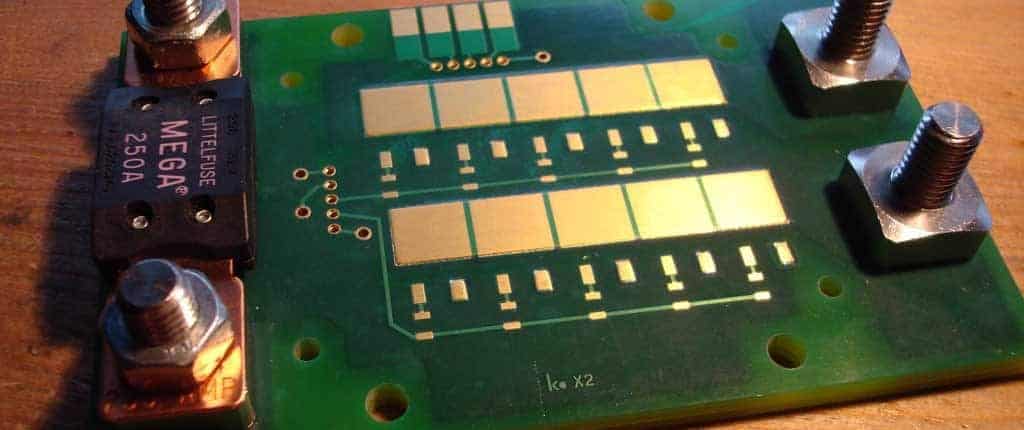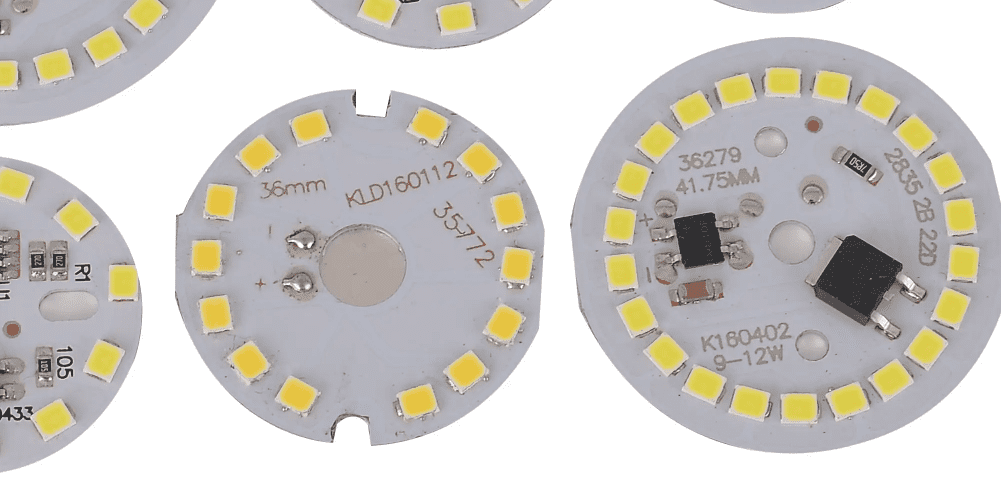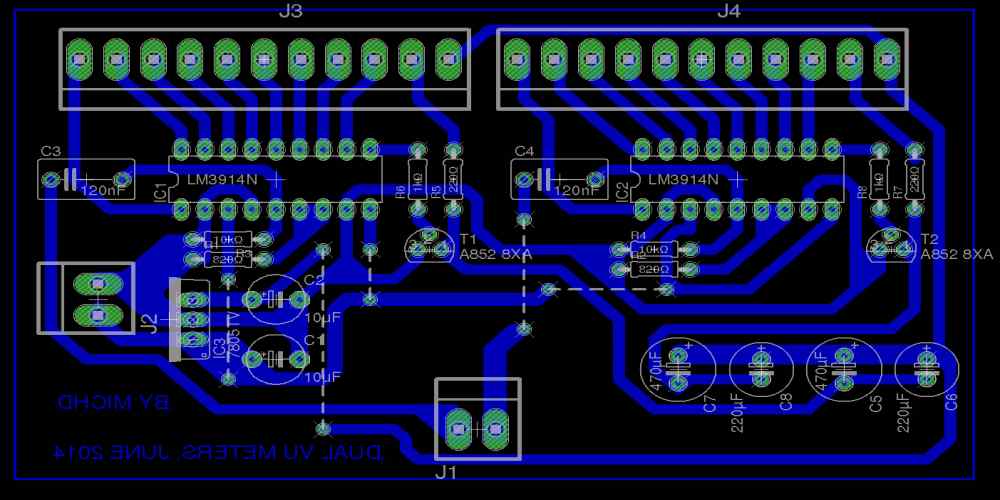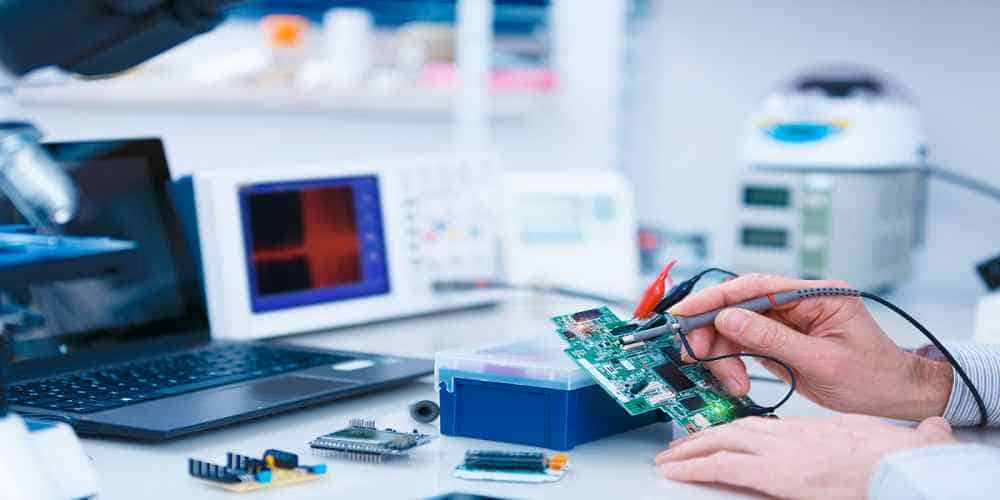LED PCB circuit design has become increasingly popular in recent years due to the numerous advantages it offers. LED PCBs are known for their energy efficiency, durability, and versatility. They are widely used in a variety of applications, including automotive lighting, streetlights, and electronic displays.
The design of LED PCBs is critical to their performance, and it involves a complex process that requires expertise in multiple areas. The circuit design must be optimized for the specific application, taking into account factors such as the type of LED used, the power source, and the environmental conditions. Additionally, the layout of the circuit must be carefully planned to ensure that the connections are efficient and reliable.
In this article, we will explore the fundamentals of LED PCB circuit design, including the key components of the circuit, the design considerations, and the tools and techniques used in the design process. We will also discuss some of the common challenges that designers face, and provide tips for optimizing the performance of LED PCBs.

Basics of LED PCB Circuit Design
Designing a printed circuit board (PCB) for an LED lighting project can be a challenging task. However, with the right approach and knowledge, it can be an enjoyable and rewarding experience. In this section, we will cover the basics of LED PCB circuit design, including the key components, design considerations, and best practices.
Key Components
An LED PCB circuit typically consists of the following components:
-
LEDs: The light-emitting diodes (LEDs) are the primary components that emit light in an LED PCB circuit. They come in various sizes, colors, and shapes.
-
Resistors: Resistors are used to limit the current flowing through the LEDs and protect them from damage due to overcurrent.
-
Capacitors: Capacitors are used to filter out any noise or interference in the circuit.
-
Transistors: Transistors are used to switch the LEDs on and off and control their brightness.
Design Considerations
When designing an LED PCB circuit, there are several key considerations to keep in mind:
-
Power supply: The power supply must be able to provide enough voltage and current to power the LEDs and other components in the circuit.
-
Heat dissipation: LEDs generate heat, and if not properly managed, can lead to premature failure. Adequate heat dissipation measures, such as thermal pads or heatsinks, must be incorporated into the design.
-
Trace width: The trace width must be sufficient to handle the current flowing through the circuit without causing excessive voltage drop or overheating.
-
Layout: The layout of the components on the PCB must be carefully planned to ensure optimal performance and minimize interference.
Best Practices
To ensure a successful LED PCB circuit design, here are some best practices to follow:
-
Use high-quality components from reputable manufacturers.
-
Test the circuit on a breadboard before designing the PCB.
-
Use a ground plane to reduce noise and interference.
-
Follow the manufacturer’s recommended design guidelines for the LEDs and other components.
-
Use a multimeter to test the circuit for continuity and proper voltage and current levels.
By following these basics of LED PCB circuit design, you can create a reliable and efficient circuit that meets your lighting needs.
Design Considerations for LED PCB Circuits

When designing LED PCB circuits, there are several important considerations that must be taken into account to ensure optimal performance and longevity of the circuit. Here are some key factors to keep in mind:
Heat Dissipation
LEDs generate heat that must be dissipated to avoid damage to the components and ensure long-term reliability. Proper heat management is critical to the performance and lifespan of the LED PCB circuit. To achieve this, designers should consider using thermal vias, heat sinks, and thermal pads to dissipate heat away from the LED.
Current Limiting
LEDs are current-driven devices, and overdriving them can cause damage or reduce their lifespan. Therefore, it is important to limit the current flowing through the LED. This can be done by adding a current-limiting resistor or using a constant current driver.
LED Placement and Orientation
The placement and orientation of the LED on the PCB can affect its performance. Designers should consider the position of the LED relative to other components and the PCB layout. The orientation of the LED can also affect the light output and color temperature.
PCB Material
The choice of PCB material can also impact the performance of the LED circuit. For example, using a metal-core PCB (MCPCB) can improve heat dissipation and reduce the risk of thermal damage to the LED.
Environmental Factors
Environmental factors such as temperature, humidity, and vibration can also affect the performance and lifespan of the LED PCB circuit. Designers should consider these factors when selecting components and designing the circuit to ensure optimal performance and longevity.
In summary, when designing LED PCB circuits, it is important to consider heat dissipation, current limiting, LED placement and orientation, PCB material, and environmental factors to ensure optimal performance and longevity of the circuit.
Components Used in LED PCB Circuit Design

When designing a LED PCB circuit, it is important to understand the components that go into it. Here are some of the key components used in LED PCB circuit design:
LED Chips
The LED chips are the heart of the LED PCB circuit. They are responsible for emitting light and come in different colors and brightness levels. When selecting LED chips, it is important to consider the application and the desired brightness level.
Resistors
Resistors are used to limit the current flowing through the LED chips. They come in different values and are selected based on the voltage and current requirements of the LED circuit.
Capacitors
Capacitors are used to filter out noise and stabilize the voltage in the LED PCB circuit. They come in different capacitance values and are selected based on the frequency and voltage requirements of the circuit.
Diodes
Diodes are used to protect the LED circuit from reverse voltage and current. They come in different types and are selected based on the voltage and current requirements of the circuit.
Transistors
Transistors are used to switch the LED circuit on and off. They come in different types and are selected based on the current and voltage requirements of the circuit.
PCB Board
The PCB board provides the physical platform for the LED circuit. It is made of a non-conductive material with conductive pathways etched on it. The components are mounted on the PCB board and connected using the conductive pathways.
In conclusion, these are some of the key components used in LED PCB circuit design. It is important to select the right components based on the requirements of the circuit to ensure optimal performance and reliability.
Layout and Routing in LED PCB Circuit Design

The layout and routing of an LED PCB circuit are critical to ensure the functionality and performance of the LED light. A well-designed layout and routing can help to minimize noise, reduce signal interference, and optimize the thermal management of the LED.
When designing the layout, it is essential to consider the placement and orientation of the LED components, as well as the location of the power source and other supporting components. The layout should be optimized to minimize the length of the signal paths, reduce crosstalk, and ensure that the circuit is easy to assemble and repair.
Routing is the process of connecting the components on the PCB using copper traces. The routing should be designed to minimize the length of the traces, reduce the number of vias, and ensure that the traces are wide enough to handle the required current. The routing should also be optimized to minimize the thermal resistance, which can affect the performance and lifespan of the LED.
To ensure the best performance, it is recommended to use a ground plane on the PCB. A ground plane can help to reduce the noise and crosstalk, improve the thermal management, and provide a stable reference for the circuit.
In summary, the layout and routing of an LED PCB circuit are critical to ensure the functionality and performance of the LED light. A well-designed layout and routing can help to minimize noise, reduce signal interference, and optimize the thermal management of the LED.
Testing and Troubleshooting LED PCB Circuits

Testing and troubleshooting LED PCB circuits is an essential part of the design process. It is important to ensure that the circuit is functioning as intended and that any issues are identified and resolved before the final product is produced.
One of the most common methods of testing LED PCB circuits is to use a multimeter to measure the voltage and current at various points in the circuit. This can help identify any issues with the circuit, such as a short circuit or an open circuit.
Another method of testing is to use an oscilloscope to measure the waveform of the circuit. This can help identify any issues with the timing or frequency of the circuit, which can be important for LED circuits that require precise timing.
When troubleshooting LED PCB circuits, it is important to have a good understanding of the circuit design and the components used. This can help identify potential issues and narrow down the source of the problem.
Some common issues that can occur with LED PCB circuits include:
- Incorrect component values
- Poor solder joints
- Short circuits
- Open circuits
- Incorrect wiring
To troubleshoot these issues, it is important to start by visually inspecting the circuit for any obvious issues, such as loose or damaged components. Then, use a multimeter or oscilloscope to test the circuit and identify any issues with voltage, current, or waveform.
In some cases, it may be necessary to replace or modify components in the circuit to resolve the issue. It is important to have a good understanding of the circuit design and the components used to ensure that any modifications are made correctly.
Overall, testing and troubleshooting LED PCB circuits is an important part of the design process. By identifying and resolving any issues early on, you can ensure that the final product is of high quality and functions as intended.

